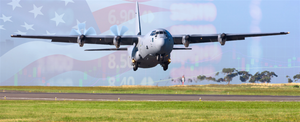Cambridge, Mass., July 11, 2024 (GLOBE NEWSWIRE) -- The G7 world leaders’ pledge to step up enforcement of the cap on Russian oil prices – and further punish violators — could help course-correct what’s been a successful, but imperfect, approach to pressuring Russian oil revenues, according to MIT Sloan School of Management professor of energy economics Catherine Wolfram, who recommends four key steps to accomplish that goal.
In December 2022, several months after Russia invaded Ukraine, a $60 per barrel cap for Russian crude oil took effect. This measure was put in place by a coalition of countries — G7, EU, and close allies — as a way to reduce Russia’s ability to finance its war. One of the world’s largest oil producers, Russia prior to the invasion produced about 10 million barrels of oil a day, or 10% of the world’s total, and it depended on revenue from all fossil fuel exports to fund 40% of its budget.
The cap applies to any purchase of crude oil exported by sea from Russia after December 5, 2022 involving maritime, financial, or other services from companies based in coalition members’ jurisdictions. Violators face penalties in their home country. A similar cap applied to refined petroleum products after February 5, 2023.
“There’s still a lot of misunderstanding around the goals of the price cap, and whether or not those goals have been achieved,” said Wolfram, who’s also former Deputy Assistant Secretary for Climate and Energy Economics at the U.S. Treasury and one of the main architects of the oil price cap.
In a paper produced as part of a recent Brookings Center event, Wolfram, along with MIT Sloan professor of entrepreneurship and former chief economist at the International Monetary Fund Simon Johnson, stressed that the price cap on Russian oil has worked at keeping Russian oil on the market and preventing a spike in world oil prices that could have plunged vulnerable global economies into a recession.
“If oil had gotten stuck in Russia, world oil prices would have gone up at a time when we were coming out of the pandemic and worried about inflation,” she said. “We all would have suffered. It’s OK that countries like China and India are buying, they just have to buy below the cap.”
In early 2024, Russian oil exports remained remarkably steady, with daily volumes similar to pre-war levels. Meanwhile, the prices of Urals crude oil compared to global oil prices have stayed low since the cap started, though the gap has narrowed over the last year. Part of the reason could be bad actors who are circumventing the cap, and calling into question its overall effectiveness, plus sparse enforcement of those bad actors.
“The cap could have been enforced more,” Wolfram says. “Governments could have cranked the screws a little bit tighter. It’s one thing to have laws and another to enforce them. If they’re not going to be enforced, they’re going to be less effective.”
Wolfram and Johnson recommend four measures enforcement agencies can take, or should continue to pursue.
Increase transparency
The U.S. Office of Foreign Asset Control’s requirement that oil service providers have attestations on the cap for every oil shipment — as opposed to blanket attestations for several shipments — should be maintained, the researchers say.
This requirement will likely lower Urals prices for Russian oil as coalition service providers pass on the increased costs from compliance and charge more given the added risk.
Expand sanction actions
To keep more transactions in line with the cap, additional coalition countries could designate Russian entities as sanctioned. For example, when the U.S. Treasury designated Sovcomflot ships, the main ships Russia uses for non-coalition transactions, as blocked property, buyers demanded a premium to transact with this “shadow fleet.”
“When it looks like the U.S. is stepping up enforcement, that drives down the price that Russia is able to get,” said Wolfram.
Coalition countries could also ban sales of tankers from coalition country owners to undisclosed buyers to keep the shadow fleet from expanding further, she said.
Establish a list of “allowed” traders
A list of companies known not to violate the cap is controversial because it forces regulators to pick winners and losers and makes it harder to punish violators.
An alternative solution could entail service providers applying for a renewable license to remain in the business. Companies that ended up not complying with the price cap would then face severe penalties, including criminal ones.
Impose secondary sanctions for any transaction above the cap
The most extreme, but most effective, solution would be for the U.S. to impose secondary sanctions on non-Russian companies involved in transactions over the cap, according to the researchers.
For example, the U.S. could prohibit a Chinese shipping company that transported Russian oil bought at a price above the cap from transacting at all in U.S. dollars.
“It’s a way to reach beyond our borders,” Wolfram says. “The thought being, companies would not want to run afoul of that.”
Ultimately, world leaders have to strike a careful balance between stepping up enforcement in an effort to hamper Russia’s war effort, and showing restraint to make sure Russian oil stays on the market and global oil prices don’t skyrocket. Exactly how enforcement evolves “depends on where leaders want to come down as they balance these two objectives,” says Wolfram.
Attachment

Casey Bayer MIT Sloan School of Management 914.584.9095 bayerc@mit.edu






